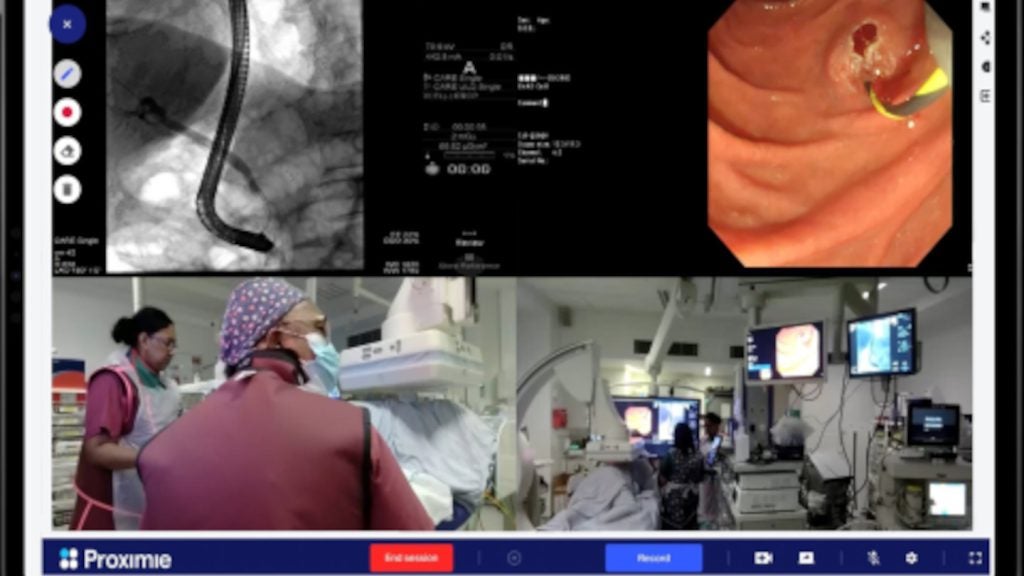
Advances in diagnostic imaging devices are increasing the need for alternative, low cost solutions for accessing, storing and sharing medical images.
Cloud computing for medical imaging has therefore gained prominence in the past few years as a solution for the problem of archiving large amounts of data and sharing images between medical facilities which are not on a common network.
The US cloud computing market for medical images was at $56.5m in 2010 and is forecast to grow at a Compounded Annual Growth Rate (CAGR) of 27% during 2010-2018.
Growth is primarily driven by the growing volume of medical images and increasing costs of the ownership model of PACS.
The need for proving ‘meaningful use’, as defined under the Health Information Technology for Economic and Clinical Health (HITECH) Act, before 2015 in order to qualify for financial incentives is expected to drive the cloud-based sharing and communication software market. This is due to its faster implementation compared to other solutions.
PACS on cloud software will also see a greater uptake in the forecast period among non-adopters such as small physician groups and small hospitals due to attractive pricing and low or no upfront costs.
How well do you really know your competitors?
Access the most comprehensive Company Profiles on the market, powered by GlobalData. Save hours of research. Gain competitive edge.

Thank you!
Your download email will arrive shortly
Not ready to buy yet? Download a free sample
We are confident about the unique quality of our Company Profiles. However, we want you to make the most beneficial decision for your business, so we offer a free sample that you can download by submitting the below form
By GlobalDataCloud computing – an overview and applications
According to the National Institute of Standards and Technology (NIST), cloud computing is defined as as a model for enabling ubiquitous, convenient, on-demand network access to a shared pool of configurable computing resources (such as networks, servers, storage, applications, and services) that can be rapidly provisioned and released with minimal management effort or service provider interaction.
The five characteristics of cloud computing are: On-demand Self-service, Ubiquitous Network Access, Location Independent Resource Pooling, Rapid Elasticity and Pay per Use / Pay as you Go.
Cloud computing can be used to deliver three types of services – Cloud Software as a Service (SaaS), Cloud Platform as a Service (PaaS) and Infrastructure as a Service (IaaS). These services can be deployed over a private cloud, a public cloud, a community cloud or a hybrid cloud.
Applications of cloud computing in medical imaging
Software as a Service (SaaS) for medical imaging
The SaaS model works through a pay for service pricing system. For the use of IT software, healthcare organisations pay a fee to the IT vendors based on usage rather than buying the software license. Healthcare organisations can therefore choose applications based on their individual needs and customisations are preserved through upgrades and new releases.
This significantly reduces implementation time and costs and also lowers traditional software costs such as large license fees. Subscription fees come with no maintenance or operating costs.
PACS cloud solutions
The concept of web-based PACS has emerged, which is capable of running on devices equipped with standard web browsers. Web enabled PACS is known sometimes known as ‘Zero Client’ or ‘Zero Footprint Client’ which runs on most browsers.
Clinical users require access and the ability to diagnose medical images from a variety of locations and image sources outside the hospital network. PACS solutions on cloud, on the other hand, store all their data on the cloud, an off-site, secure server which can be accessed anywhere.
Currently available PACS cloud solutions integrate diagnostic viewing, sharing and communication software which allows physicians to diagnose access and share medical images from anywhere.
Cloud based sharing and communication solution for medical images
The new cloud based sharing and communication solutions are web based, requiring the medical facility to upload the data into a cloud which the other facility can download.
They are also often vendor neutral, which means data can be uploaded from and downloaded to any PACS software. Many companies also offer compatibility with non-DICOM images which makes it easier to view and receive non-compatible images.
Infrastructure as a Service (IaaS)
Cloud infrastructure allows hospitals to store data on multiple virtual arrays, which may be located either on or off premises, as opposed to the storage in today’s PACS and vendor neutral archive (VNA) configurations.
With an exponential increase in the medical data generated each year, many hospitals are now exploring off-site storage facilities by a third party vendor in the form of cloud storage, while also allowing the hospital or medical facility to pay only for the gigabytes used.
This method is also gaining intresent due to the inherent vendor neutrality of the data storage which allows hospitals to easily send data from the old PACS vendor to the new PACS vendor without worrying about compatibility.
US cloud computing market for medical images, market characterisation
The cloud computing market for medical imaging is expected to grow exponentially at a CAGR of 27% from $56.5m in 2010 to reach $383.1m in 2018.
Currently, the biggest segment contributing to the cloud computing market for medical images is the storage and disaster recovery market which was valued at $22.5m in 2010. The storage and disaster recovery market is expected to grow at a CAGR of 34% to reach $228.1m in 2010.
This growth is expected to be due to the exponential increase in medical data generated in images with the advent of new technology. The cloud based sharing and communication software market is expected to grow at a CAGR of 20% over the next eight years to reach $131.6m.
PACS on cloud will also see a greater uptake in the forecast period among non-adopters such as small physician groups and small hospitals due to attractive pricing and low or no upfront costs. As a result, PACS on cloud market will see a growth of 25% over the next eight years to reach $23.4m in 2018.
US cloud computing – market dynamics
Market drivers
– Innovative solutions for incompatibility and interoperability to drive cloud computing market for medical imaging
– Exponential growth of medical images data and cost efficiency to drive cloud computing solutions
– Under penetrated small and medium sized hospitals to drive cloud based new PACS installations
– Need for vendor neutrality to drive market growth for cloud computing medical imaging solutions
Market restraints
– Privacy and confidentiality concerns to slow down cloud computing adoption
– Unproven performance and availability of cloud computing services
US cloud computing market for medical imaging – competitive landscape
Most companies offering PACS cloud solutions are less than five years old and only two of the major enterprise PACS players currently have solutions in the PACS cloud market.
FujiFilm offers a virtualised and cloud enabled Synapse solution which works on VMware platform. The company released its cloud version in 2010.
Similarly, Carestream recently launched Vue cloud solutions for medical imaging. Other PACS players such as GE Healthcare and McKesson offer web-based PACS SaaS solutions in a virtualised environment but do not offer it in a cloud computing architecture.
Also, there has been a tremendous increase in the number of vendors offering sharing and communication solutions.
Some of the companies that offer cloud based sharing and communication solutions are – Lifeimage, DR Systems, Candelis, Carestream, Etiam Corp., Virtual Radiologic, Accelarad and DICOM Grid.
For details on the full GlobalData report, click here.
GlobalData is an industry analysis specialist company providing business information products and services. Its highly qualified team of analysts, researchers and solution consultants use proprietary data sources and various tools and techniques to gather, analyse and represent the latest and the most reliable information essential for businesses to sustain a competitive edge.







